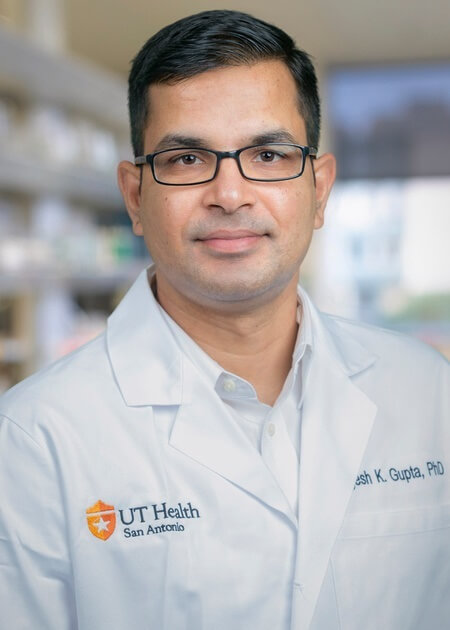Researchers discover how COVID-19 virus disguises itself in the body
Scientists from The University of Texas Health Science Center at San Antonio have discovered a mechanism by which SARS-CoV-2 exploits changes in metal ion concentrations to disguise itself in the body. Varying concentrations of metal ions — positively charged atoms such as magnesium, manganese and calcium — are observed in hospitalized COVID-19 patients.
“This is a newly described metal-dependent mechanism by which these ions help the virus to evade immune surveillance,” said Yogesh Gupta, PhD, senior author of the research published June 2 in the journal Nature Communications. Dr. Gupta is assistant professor of biochemistry and structural biology at the UT Health Science Center San Antonio and investigator with its Greehey Children’s Cancer Research Institute.
Dr. Gupta and colleagues captured atomic-level snapshots during various stages of camouflaging activity of the coronavirus. It turns out metal ions have an architectural purpose — they form a bridge between viral messenger RNA (which are instructions for encoding the virus) and a protein complex consisting of viral proteins nsp16 and nsp10. The activity is sort of like a scaffold swaying in the wind and workers laying hands on it to steady it.
With the scaffold stabilized, the virus then uses nsp16 to modify its messenger RNA cap into a Trojan horse unrecognizable to the immune system. This tricks the defenses, protects the RNA code from being degraded and enhances viral growth in the body. This activity is required each time the virus multiplies.
The nsp16/nsp10 protein complex stretches itself when the RNA cap is modified, which is a second finding the scientists reported. The stretching is facilitated by metal ion binding.
The understandings gleaned in this research can eventually aid treatment of all coronaviruses.
“The next step is to use this structural knowledge to develop novel therapies to treat COVID-19 and emerging coronavirus infections,” Dr. Gupta said. “We are already studying how imbalances in metal concentrations regulate the host immune response to these infections.”
This research was made possible by the San Antonio Partnership for Precision Therapeutics, the Institute for Integration of Medicine and Science, the Max and Minnie Tomerlin Voelcker Fund, the Cancer Prevention and Research Institute of Texas, UT Health San Antonio and the Greehey Children’s Cancer Research Institute.
A metal ion orients SARS-CoV-2 mRNA to ensure accurate 2’-O methylation of its first nucleotide
Thiruselvam Viswanathan, Anurag Misra, Siu-Hong Chan, Shan Qi, Nan Dai, Shailee Arya, Luis Martinez-Sobrido, Yogesh K. Gupta
First published: June 2, 2021, Nature Communications
